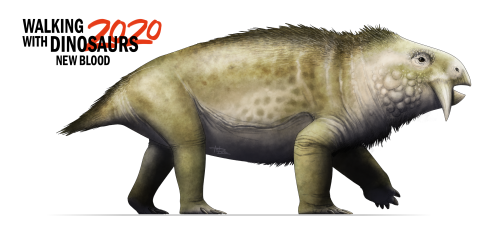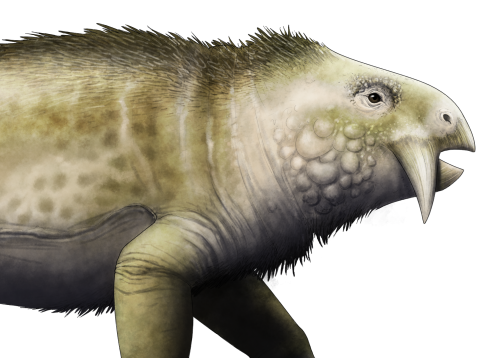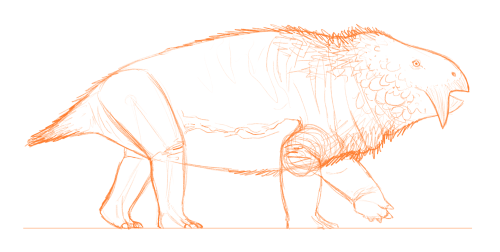i-draws-dinosaurs:WWD2020: Placerias hesternusHeyyy who remembers WWD2020? Y’know, that thing I star
i-draws-dinosaurs:WWD2020: Placerias hesternusHeyyy who remembers WWD2020? Y’know, that thing I started doing this year then suddenly stopped doing and now we’re almost finished with 2020 and I haven’t finished the first episode? Yeah that. I did disappear for several months cause of tech troubles, not being able to access tumblr and just plain ol writer’s block but now I’m back on the horse and ready to go babey!!So anyways, here’s the second-to-last species from Episode 1: New Blood!General:Placerias was a huge tusked herbivore and one of the last of the large non-mammalian synapsids. Now, WWD does a thing that’s since fallen out of practice by calling them “mammal-like reptiles”, which is a term some of y’all may be more familiar with. The thing about that though is that Placerias and its relatives were not reptiles. Like, not at all.Synapsids, the group that includes modern mammals and also Placerias and the more famous Dimetrodon, was a group that branched off from the earliest land vertebrates more than 300 million years ago. Reptiles branched off at about the same time but from a different ancestor, so “mammal-like reptile”…. basically means nothing. These days we use the rather clunky “non-mammalian synapsid”, but we also use “stem-mammal” which is a lot nicer!Anatomy:So, these stem-mammals have quite different anatomy to things like dinosaurs, and I will admit that I am nowhere near an expert on them! But from what I can tell, the WWD Placerias gets it pretty right! My main critique is that they’re a little more upright than what they should be? Real life Placerias were a little more,,,, sausagey. Long fat body, short stumpy legs, that kinda deal.I’m gonna sound like a broken record on this eventually but I think this is the first time it’s come up properly? But the Placerias in WWD are very skinny. This is one where I’m like, kinda ok with it in the show because in the context of the episode, these animals are living through a drought. However, I’d doubt that a healthy living Placerias would’ve been showing so much rib. Again….. sausagey.The feet though, are actually really good!! This is the kind of animal where a lot of people would probably just slap some elephant feet on and call it a day, but clearly the WWD team put in the work and gave it flatter, individually-separated toes! I always love to highlight good points like this because WWD is really good dammit and it’s great to see moments where they really nail the anatomy.Look at those flat feet! Love that for them.Skin/Colouration:Again… more good stuff!! Mammalian-type skin, which Placerias probably had, isn’t great at producing a wide range of colours, so the drab greyish-yellowish colour is totally plausible (if not particularly pleasant to look at)! One thing that I would like to see though, is hair. Hair in some form has existed since the Permian, and I think it makes sense for something a mammalian as Placerias so have at least a little fuzz, as a treat. WWD’s Placerias is stark naked, but I’ve given mine some patches of scruffy hair. One other cool thing that’s missing though is that the family group Placerias belongs to, the uh… stahleckeriidae, had some pretty prominent rough eyebrow ridges. It’s kinda unclear what these were used for, but it’s a neat little detail that I’ve added in to the new design!So, that’s Placerias! Like many kids, I’m sure, this weird creature was my very first introduction to the wrid and wonderful world of synapsids, and I think the WWD team did a pretty thoroughly good job with this chunky lad! Only one more animal to go for New Blood, then it’s on to the next episode, Time of Titans! -- source link
Tumblr Blog : i-draws-dinosaurs.tumblr.com
#placerias#wwd2020#synapsid#stem-mammal#placerias hesternus#palaeoart#paleoart#palaeontology#paleontology#digital art#triassic#palaeoblr


